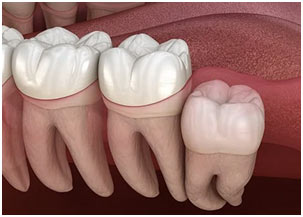Introduction
The teeth are the modifications of the dermal skeleton. The origin teeth developed from denticles of the dermal plate at the margin of the mouth. Teeth are not present in jawless vertebrates and lower chordates.
Structure of Teeth
The vertebrate tooth consists of:
- A central core of dentine
- A crown of enamel
- One or more basal root canal to core dentine
The dentine forms the bulk of the tooth. It is formed from odontoblast cells which are present in the dermal papilla of the canal root. The exposed surface of the tooth is surrounded by enamel which appears shiny in mammalian teeth.
Development of Teeth
Teeth develop as infoldings of ectoderm which is a continuous furrow along the length of the jaw which is called the dental lamina. The dental lamina forms individual tooth germs which are connected by a strand of tissue.
Tooth germ remains protected within the jaw but tooth buds called enamel organs to develop from them. A special series of cells called ameloblasts are present in the enamel organs, these cells secrete the enamel to form the crown of the tooth.
At the base, dermal tissues organize to form dermal papilla. It outgrows into the interior of the tooth bud. A mass of odontoblast cells, present in the dermal papilla, produce the dentine. When the tooth is fully formed, papilla remains as pulp in the tooth canal.
In a few vertebrates e.g., armadillos, the enamel organ is present but functionless that is why their teeth have no enamel.
Degree of Replacement and Permeance
As for the degree of replacement and permeance is a concern, there are three types of dentitions:
Polyphyodont Dentition
if a number of replacement of teeth is numerous, the dentition is called Polyphyodont e.g., most vertebrates through reptiles show Polyphyodont dentition. In reptiles and sub mammalian vertebrates, teeth are replaced in waves that sweep along the jaws eliminating and replacing every other tooth.
Diphyodont Dentition
When the number of replacement of teeth involves only two sets i.e., one set is of deciduous or milk teeth, and another set f permanent teeth are called diphyodont dentition. They have a definite number of teeth in each species with rare exceptions.
Every species of mammals has a specific sequence of teeth eruption e.g., in man if permanent teeth on one side are numbered 1 to 8 from front to rear then the sequence of eruption of teeth is 6, 1, 2, 4, 5, 3, 7, 8.
Tooth number 8 or last molars erupt quite late in higher primates. It is called a “Wisdom tooth”. Sometimes it is imperfect or absent.
Monophyodont Dentition
If only one set of teeth develop, then dentition is called monophyodont dentition. For example, in few mammals such as platypus, manatee, and toothless whale.
In platypus, the milk teeth are replaced by horny teeth. While in toothless whales, the teeth are formed within jaw bone but they may not erupt.

